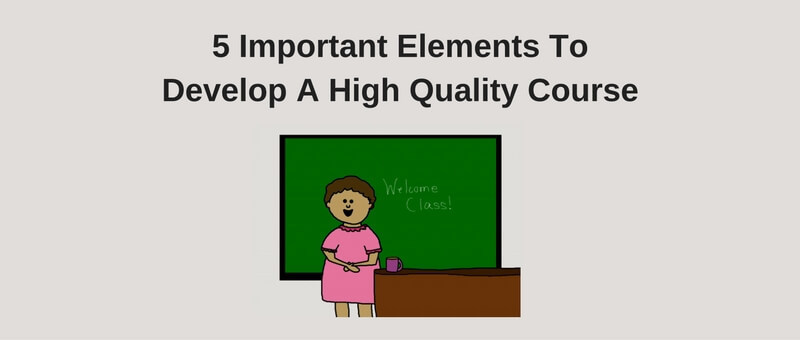College isn’t for everyone, and it wasn’t for me. I hate pre-made schedules. I don’t like to write essays. I don’t like TAs and big classes were a turn-off. I despise the fact that I had to take prerequisites courses for nothing other than money. If they didn’t fit in line to what I was studying, I felt it was a big waste of time.
I couldn’t stand the expense that went along with college too. I am not for academia in the least.
However, that doesn’t mean I hate learning. I love it! And, I learn every day. I also love teaching. There’s nothing more exciting than to give someone knowledge I have. It’s an inspiring thing to do.
The problem isn’t just with me. I know there are others like me – hate schooling but love to learn. Why is that?
The Issue Behind Online and Offline Traditional Education
I won’t go into a lot of detail about what’s wrong with traditional education, but it’s important that you understand that teaching isn’t just what you get in a classroom. It’s not one-directional, no matter what some folks may think.
What is teaching then? It’s an agreement between somebody who has information and somebody who would like that information. They must work with each other to ensure the message gets transferred.
The majority of teaching people are used to come in broadcast form. It’s somebody that decides what information is more important, crafts that information and tells the student about it, no matter if the time is right for them to know about it.
This often works out well for students who can learn from it. And, people who really want to attain the end result will just deal with the useless information to attain what they’re really after. Things shouldn’t be like that all the time though. For a majority of folks and subjects, this just isn’t enough.
Entrepreneurs should be doing better than this… and they can be.
The way to ensure people get what they want in a system that’s practically risk-free means combining powerful instructional design tools with ideas from the audience and relationship building. If you can do this, people would be willing to pay for the information.
5 Primary Elements Of Creating Worthwhile Online Courses
By now, you would like to know how you can create the right courses for people who actually want your material. It’s important, to pull this off, that you know the five primary elements that will ensure a valuable, digital course.
- Build
- Listen
- Sell
- Teach
- Test
Listen To Your Audience


The most important thing to do when you’re trying to come up with a course that people will want is to listen to them. What is your audience saying? These folks know what they need; what problem they’d like to have solved. When you listen to them, you can decide what it is you’d teach and how you’d teach it. These kinds of choices tend to be less risky because you’re not just hoping someone will want what you have to tell them.
The biggest issue with traditional offline and online education – and is horrible for entrepreneurial course building – are people thinking they can give an answer to someone’s problem using their own point of view. Wrong!
It really doesn’t matter how talented you are; ego doesn’t play in education. Rather, you need to really look at what people need. Take a step back and see what they’re saying. While motivation is a key to learning, it doesn’t do a student any good if an educator refuses to craft their message in a way that keeps them interested. And, chances are they may not even sign up for it.
There will be instances where you do know better than the audience in what they need to address their problems. This happens on a daily basis. However, you still need to listen to them. It’s how they cast the issue they have that provides you the data you need to come up with a product that they’ll see as invaluable.
Teachers can meet students everywhere, and working together is the only way to attain goals for both folks.
Teach Your Audience
Once you’ve listened to what your audience has to say, it’s time to learn how to teach. This is where people make mistakes. You have to understand that there are all kinds of ways to learn, but people are under the impression that everybody learns the same way.
The one thing that ensures students retain information being taught is effective teaching.
Think back to when you were in high school. How many times did you go to class, eager to learn, only to find that the teacher goes on and on about the subject that they swear up and down will be useful later in life? All the way you’re sitting there thinking, I’ll forget this right before the exam”.
This kind of scenario occurs when the desire and need to learn something isn’t figured into the teaching and planning process. And, it can be avoided by making sure your students have something they’ll want to learn from.
When you do this, it means you have an understanding of how people learn, why it is they want to learn and provide them with positive reinforcement to continue their learning process.
The best thing you can do is place yourself in your students’ position. You need to understand what it is they do know and the steps you need to take to increase their knowledge. How people learn is different because every person learns differently. Your job, as the teacher, is to offer an array of learning methods – important when you move from the testing stage to the permanent offerings.
You can address and overcome the problems seen in traditional education by crafting your teaching to meet where the students are.
Sell What You’re Teaching
When you know what you’ll be teaching and how you’re going to teach it, it’s time to sell it to them. You want people to purchase or promote the product or service.
It sounds greedy to sell your course, right? Well, it’s not since you’ve listened to what people have had to say and planned to provide them with the information they need. After you’ve taken your first steps, the selling process just needs to you communicate what you have to offer them. You want them to immediately think that you have the answers to their frustrating problems.
It doesn’t matter what you’re trying to sell – coaching program, e-book or digital course – your listening should have informed you what you should sell and how you’ll offer them an answer. This will help you to argue the point of why they need to buy.
People sell before they build because they want an audience’s affirmation that what they’ll offer is valuable.
There’s no easy to way to sell your product. You can’t just lay it out there for people to get. You have to ensure your message is being heard. The words used to deal with a student’s problems need to resonate with them. You want them to feel like they’ll get something from what you have to offer. And, you want folks who are on board with the idea so that you can easily develop it.
Testing Your Information
It doesn’t matter how careful you were with the research; sometimes you can still get it wrong. In order to avoid any problems, you need to do some testing to ensure that you’ll be giving folks what they want when they want it.
When you test something, it means you’re validating that what you’ve come up with will “speak” to your audience. Just because you’ve sold something on paper doesn’t mean it’ll be sold when it actually comes out. This is where testing comes into play!
The best thing for you to create a quality product is to get the audience involved. Let them know what you’ll do to address their issues, but that you’re going to need some help from them to pull it off.
Make some part of the curriculum live – don’t put a lot of work into it or offer permanent elements for groups of people at a discount. These folks should provide you with feedback about the delivery and material.
Testing is extremely valuable since it can lead to a more valuable, scalable product down the road. Remember, it doesn’t matter how much planning or research you do, you can never catch every important point without some help. There are ways testing helps you:
You attain evidence that people want your information and don’t mind paying for it
You certify your ability to teach the material effectively
It’s best if you can do this live so that you can deliver the material right to your students. It is also easy to prepare and allows you to alter things quickly based on reactions your testers have. There are no limits to the number of times you test a product out. The more you do, the better the final material can come out. And, once the testing phase is complete, you’ll have a valuable product that’s ready to be built.
Building Your Material


After you have compiled, sold and tested the information, you can come up with something valuable for people to use and profitable for you to teach them.
After you’ve done the preparation, confirmed what people want and that you can teach it to them in a way they understand it, it's time you can build them your product/service.
When you reach this stage, it means you’re turning what you have learned into something substantial. This could mean video, audio or text rather than live calls. Obviously, these things take time and shouldn’t be done until you’ve ensured that it’s what you should be offering.
You can develop a permanent delivery system such as a members-only or email course that allows folks to attain the information you’re offering without you being directly involved in their learning process.
By this point, you’ve done a lot of hands-on work, which means you can invest your resources and time to remove yourself from the rest of the project slowly. You don’t want to be completely out of the equation because you want the people to come to you when they need it.
When you build a permanent product, it’s a big investment in resources and time, but once you’ve done it, the product can be scaled into something bigger. This will boost your message and the value over and over and over again. This can change lives and be profitable for you and them.
It all sounds amazing, right? Well, it’s time for you to do something about this yourself.
How You Create An Online Course For Yourself
If you want to create an online course, you need to incorporate these five primary elements, as you want people who would be excited about buying your product. Don’t just go for the usual “build it and they will come” mentality. Instead, do something good for yourself and your audience by listening to what they have to say and coming up with something they really want.
There are just four questions you need to ask yourself:
- Can I teach it in a way that people understand it?
- Can I effectively communicate the information before I create it?
- Am I ready to test, changing things when called for if there are mistakes?
Do you have any suggestions for creating online courses? Please leave your comments below.


